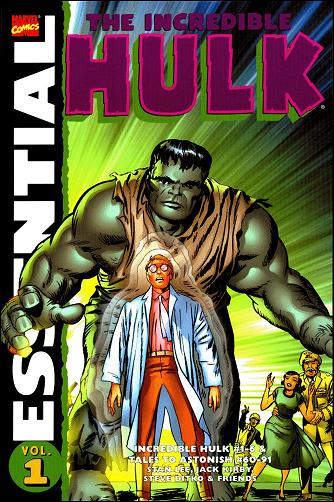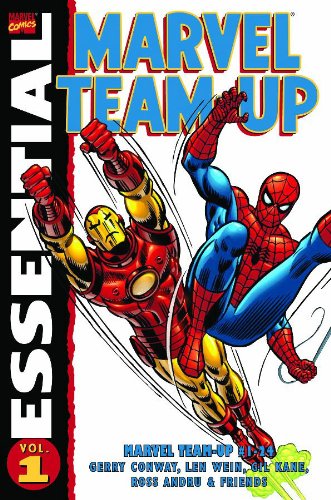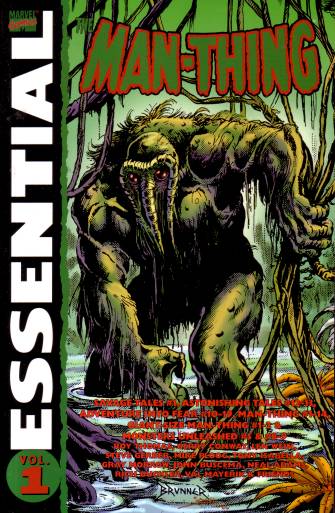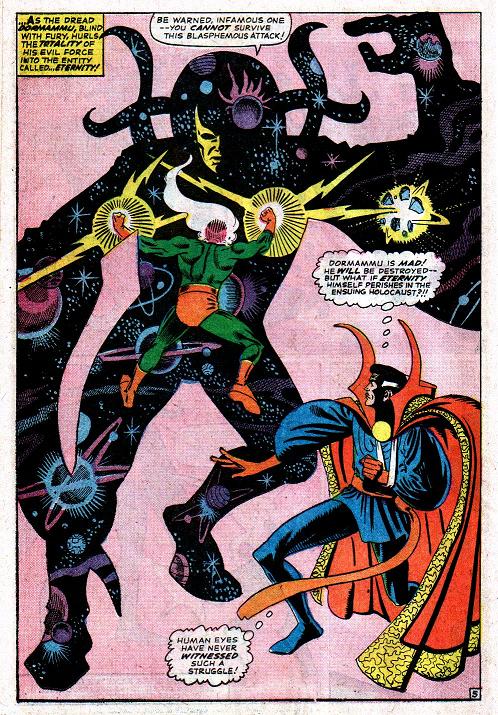
Essential Fantastic Four Vol. 1
Stan Lee, Jack Kirby, Dick Ayers and friends
Reprints: Fantastic Four #1-20 and Annual 1 (November 1961 – November 1963)
Get this for: the birth of a legendary comics run — Five stars
One of the first essential volumes published back in October 1998, The Essential Fantastic Four vol. 1 contains stories that should be familiar to any longtime Marvel fanboy or girl. If you haven’t read them in reprints, they have been referred to so much that it feels as if you’ve read them. Myself, I guess I’ve read roughly half of the issues collected here before and knew about most of the others. So I tought I knew what to expect even though it had been years since I’ve last read these stories. I remembered them as slightly on the dull side, typically early Marvel where you can see the potential (as with The Hulk yesterday) but it isn’t quite realised yet.
I was wrong.
Reading these first twenty issues, plus the annual in one sitting made me realise how good Lee and Kirby were right from the start. Even the origin story, repeated ad nauseam over the decades is fresh when you read the original. Lee starts the story with a bang and never lets up, building the tension from the start. Jack Kirby’s art is more subdued than Classic Kirby, more realistic and low key. And even if “Central City” is mentioned here, it’s clear the action takes place in New York. Throughout the stories here there is a sense that they do not take place in a vacuum, but in the world outside your window, fantastic as the adventures, settings and villains are. What it reminds me of is Tintin, or Carl Barks’ Uncle Scrooge, two other adventure series that have a strong sense of reality about them, even if one stars a never aging boy reporter and the other pantless anthromorphic ducks. Quality wise too these Lee + Kirby stories are on a par with Tintin’s or Barks’ best.
The art is so good here, so fluid and full of grace but always in service to the story. Kirby has great fun depicting the Fantastic Four using their powers: the Thing’s brute force, the Torch playing with fire, the Invisible Girl’s use of her power to gain the upper hand on villains dismissing her as a professional hostage and especially Mr Fantastic’s stretching. His compositions are great as well — just look at the covers, especially issue 12.
Meanwhile Lee’s writing sparkles: there’s no dull plot in the bunch, he has as much fun getting the FF’s characters right as Kirby has in showing the work: the Thing’s gruff exterior hiding a pussycat, Mr Fantastic being one step ahead of his team mates but caring deeply for them, the Torch’s hotheadedness and the Invisible Girl’s worrying. As per usual with Lee, he uses a thousand words where somebody else could’ve done it with ten, but it never grates here as it did with The Incredible Hulk. The dialogue is witty, there are few unnecessary captions or thought balloons and it all flows as naturally as the art does.
And the villains here are great: the Mole Man, Skrulls and Super Skrull, Namor the Submariner, Miracle Man, The Puppet Master, the Mad Thinker, Rama Tut and of course Doctor Doom. Doom appears in five of the twenty stories here yet never bores. Each time he returns he gets better. The Submariner is the same and even the Puppet Master, so incredibly boring when used by almost everybody else is great here.
But you know what the best thing about this volume is? As great as these Fantastic Four stories are, they will only get better!




